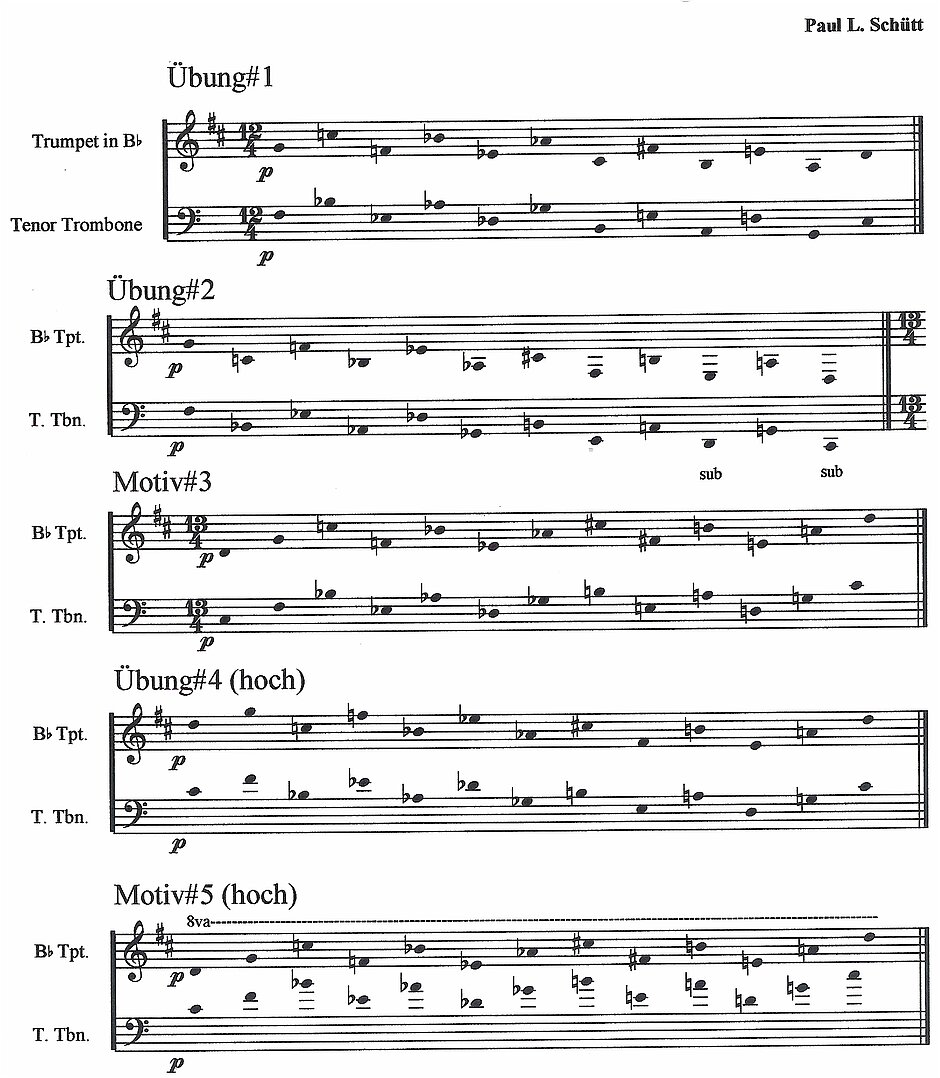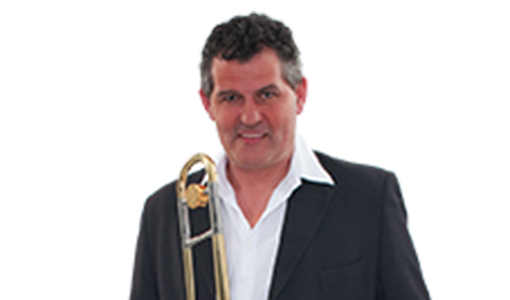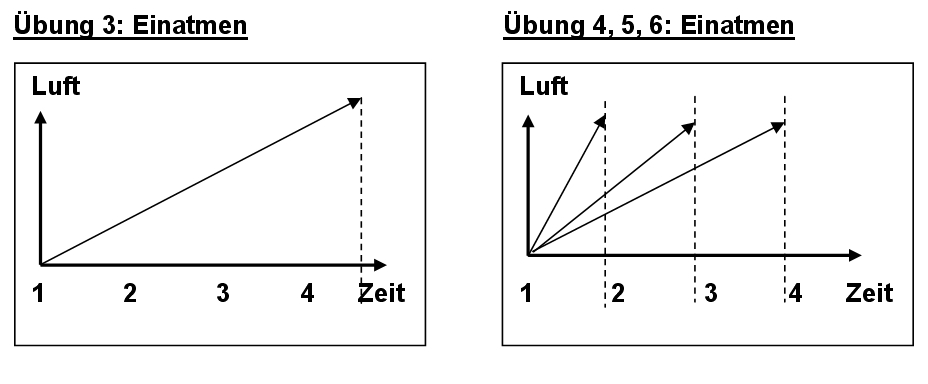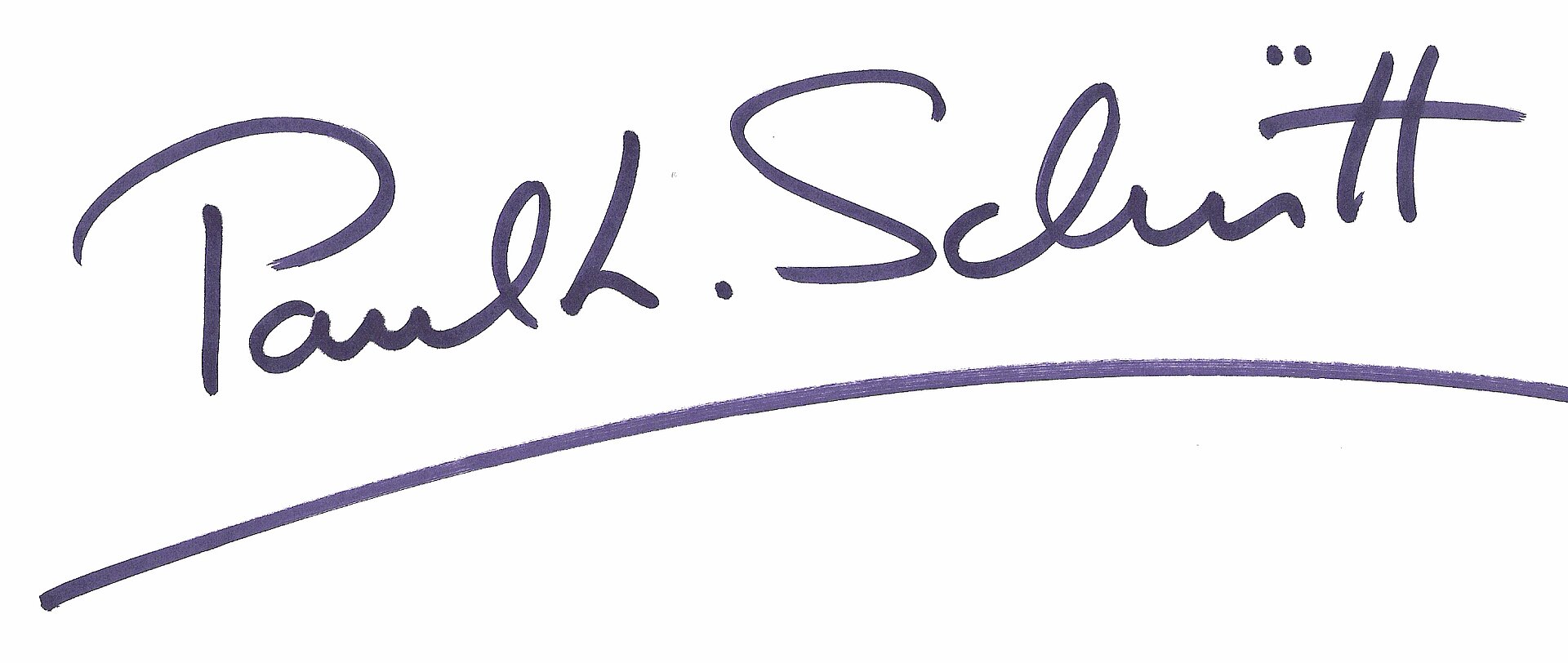Breathing in and out
In this workshop I would like to show you a few easy preparation exercises for a brass instrument. Many musicians know the feeling of not being able to transfer the air they inhale onto the instrument. Concepts like diaphragmatic breathing, thoracic breathing, outer costal muscles, abdominal-what-have-you, etc., are so abstract that hardly anybody understands them. One thing is for sure: there is more than just "in" and "out".
Air (breathing in and being tense)
To feel what happens when I breathe in, I use the unvoiced syllable "mo" while inhaling. I recommend performing these exercises both while seated and standing up.
Exercise 1: "mo"
This exercise allows you to consciously feel your dynamic inhalation. To avoid any kind of tension in your body, I won’t tell you what it is supposed to do. I suspect it will fill with air starting with the belly, followed by the sides and finally in your chest"”and that is how it should be.
It is very likely that your shoulders also move slightly up. (Note that for many wind players, even the slightest movement of your shoulders is tantamount to a "death sentence.")
Breathing through the nose and controlled inhalation
Try to think consciously of the "mo" when breathing through the nose. The mouth cavity needs to be as large as possible (like for yawning).
Controlled inhalation
While playing, there are times when there is hardly any time for breathing in. The following exercise is designed to help you control how you breathe in.
Start by breathing in at maximum capacity during four beats using exercise 3 ("mo"). For exercises 4, 5 and 6, try to reach maximum capacity faster.The graphics show the linear buildup of air with respect to the beat.
Embouchure on bad days
Is it a good day today and does everything work as expected, or does the very first note I play already sound like there is no point in practicing?
Like in sport, warming up before beginning to practice or play is of the essence, because a good preparation helps me "own" the music.
Where is my head?
Singing the note through the instrument may help.
(Playing it first to hit the right pitch helps me visualize the note in question.)
Now that I have an idea about the pitch, I can sing the note into my instrument using "da" or "ta".
Try to concentrate on what you are doing while singing. Singing while thinking of something else is doomed to fail. (Beginners often manage to play children’s songs in no time, because they hear those songs "in their head" and are able to sing them.)
With the tone representation "da" or "ta" in your head, slowly move your lips towards each other until the sound starts "almost automatically" and is amplified by the mouthpiece and the instrument itself. (The goal of this exercise is to create as much lip tension as is necessary to play this tone.)
Example:
1. Lift up your music stand and look at the muscles in your hand. While lifting, your muscles flex to hold the music stand. When the stand is back on the ground, the hand muscles relax again.
2. First flex your muscles and then lift up the music stand. After putting the stand back, you will have used a lot more muscle energy for lifting it.
In short: You only really need your muscles while lifting the music stand. The same preparation should also be applied for the examples: "I lift up the music stand." The result should be the same: both music stands were lifted.
Tone and sound when playing a brass instrument
Question: Which mental preparation do I need while playing, how much tension do I need and how exactly is that related to the sound? If my notes sound tense, that is usually due to too much tension in my belly, throat or mouth cavity. While I’m not playing, my muscles should only be prepared but certainly not tense. My control center (brain) is thinking of the sounds. My body responds rather "naturally" and pretty much takes care of controlling the relevant muscles (think of the music stand!).
In short: The act of "quasi singing" the notes or melody acts as a relief on the muscles, and so my sound is more open. Given sufficient training, there is a lot my body does right.

Playing softly and at other volumes
Certain rituals during my daily practice sessions not only better prepare me for y instrument but also boost my self-confidence.
My warm-up exercise also has musical relevance, because what I play is actually the "motif" of the entire circle of fourths or fifths.
The notes are called C, F, B, Eb, Ab, Db, Gb, B, E, A, D, G, C.
Each player needs to find and refine their own warm-up approach.
The first contact with my instrument is always (as describe above) a soft approach (air, lips, "da, e, i, o, u", slowly and legato style). My tuning device is always switched on for visual confirmation.
I usually start playing in the middle register, with the F, and then move on to C. Next, I play the low register once (instruments without a fourth-valve should be played in the area around the subtone), followed by the high register (the first notes I play are soft).
Pitch (relaxing between notes)
Except for a few natural talents, most instrumentalists need to practice extensively to master all registers.
Because of a high volume next to my ears, which is due to the bell’s proximity, I cannot really check my tone.
Playing even louder is exhausting and eventually forces me to take a break.
Here is my antidote: play softer and try to almost "sing" the notes of these exercises internally. Try to relax between notes (remember the music stand exercise).
After a brief warm-up (about 5 minutes), I start my actual practice session. I play the most difficult phrases, look into new pieces or passages, or I prepare for upcoming concerts.
Have fun and keep enjoying playing music!



